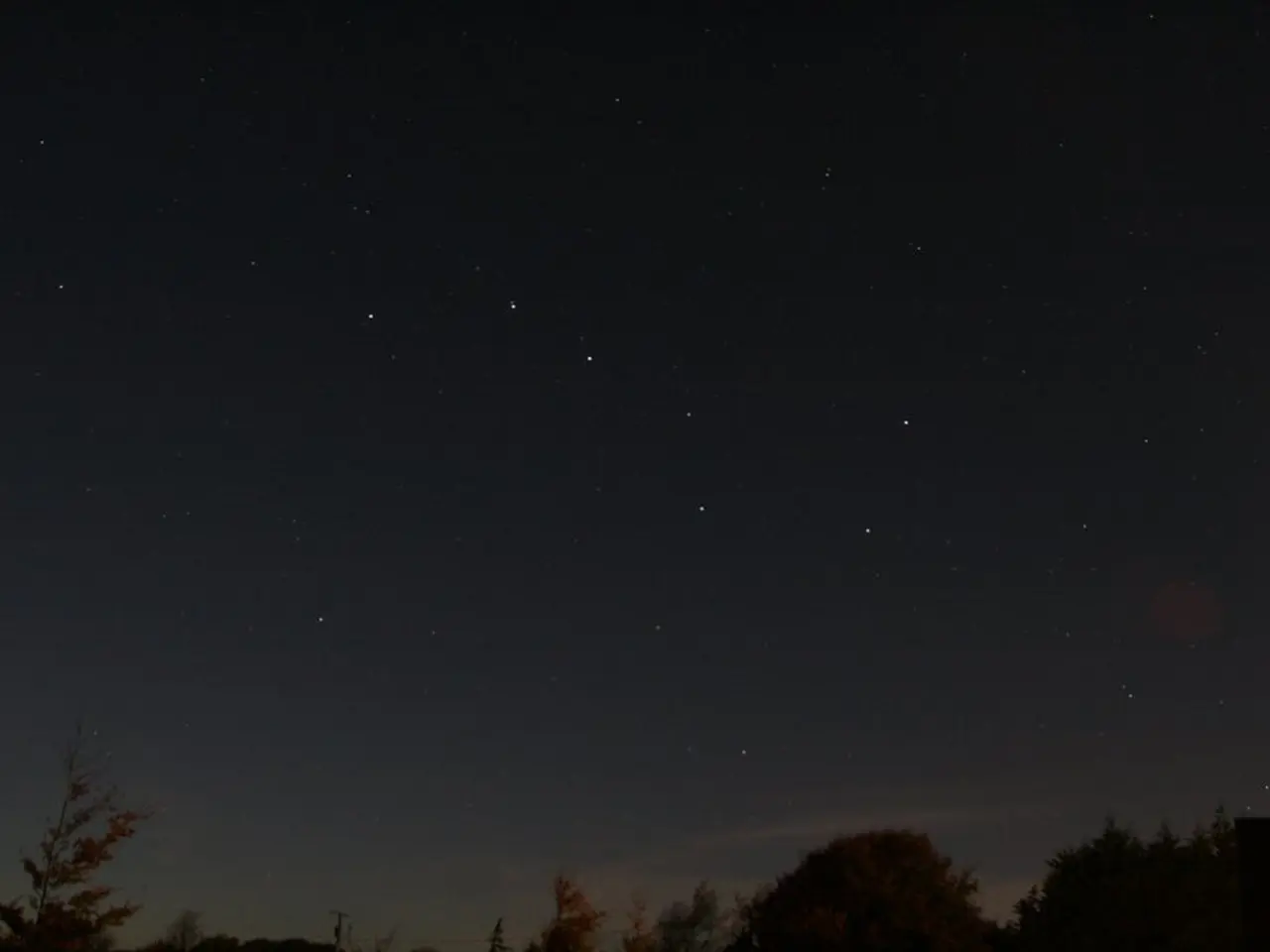Uncovered by the James Webb Space Telescope: A Unique Cluster of Emergent Stellar Infants
Alignment of High-Speed Gas Jets in Serpens Nebula Offers New Insights into Star Formation
The James Webb Space Telescope (JWST) has captured a rare phenomenon in the observable Universe — the almost perfect alignment of high-speed gas jets in the Serpens Nebula, a large star-forming region located approximately 1,300 light years from Earth.
Astronomers observed the Serpens Nebula with the Near Infrared Camera (NIRCam) of the JWST, revealing a dozen of protostellar flows. These jets, emitted by young stars in formation, provide a natural laboratory for studying star formation processes.
The alignment of these jets could be influenced by several factors related to the environment and star formation dynamics. Key factors include strong, organized magnetic fields in the molecular cloud, the initial rotation axis of the collapsing protostellar core, and environmental influences such as turbulence and cloud geometry.
The observed alignment of jets implies that the angular momentum vectors of the protostellar systems are correlated, indicative of ordered initial conditions in the cloud from which these stars formed. This suggests a common origin of angular momentum, possibly due to the influence of large-scale magnetic fields.
The alignment also supports the role of magnetic fields in shaping stellar outflows and possibly the fragmentation and collapse of the parent molecular cloud. This finding could stimulate new questions about the dynamics of young stellar systems.
A recent study using JWST observations has confirmed that these jets, detected in specific spectral lines ([Fe II], H2), provide measurements of jet material at various temperatures, confirming their high velocities and close association with protostellar accretion disks. Such data help elucidate the impact of magnetic and dynamical factors on jet orientation.
These findings provide new perspectives on star formation and dynamics, highlighting the interconnected nature of star formation in clusters rather than isolated events. The study, published in The Astrophysical Journal, aims to provide insights into the chemical and physical processes within stellar nurseries.
This discovery underscores the complexity of processes involved in star and planet formation. As we continue to observe and analyse the Serpens Nebula, we may uncover more secrets about the mechanisms governing star and planet birth in the Universe.
[1] Reference: The Astrophysical Journal, 2025.
- The high-speed gas jets aligning in the Serpens Nebula offer insights into environmental-science and space-and-astronomy, as they suggest a common origin of angular momentum potentially due to the influence of large-scale magnetic fields.
- In the realm of health-and-wellness and fitness-and-exercise, these findings resemble the streamlined growth and development of organisms under specific conditions, as they point towards ordered initial conditions and the impact of external factors on the outcome.
- The study of the Serpens Nebula's protostellar flows using the James Webb Space Telescope contributes to the advancement of science, illuminating chemical and physical processes within stellar nurseries and deepening our understanding of environmental-science and space-and-astronomy.




